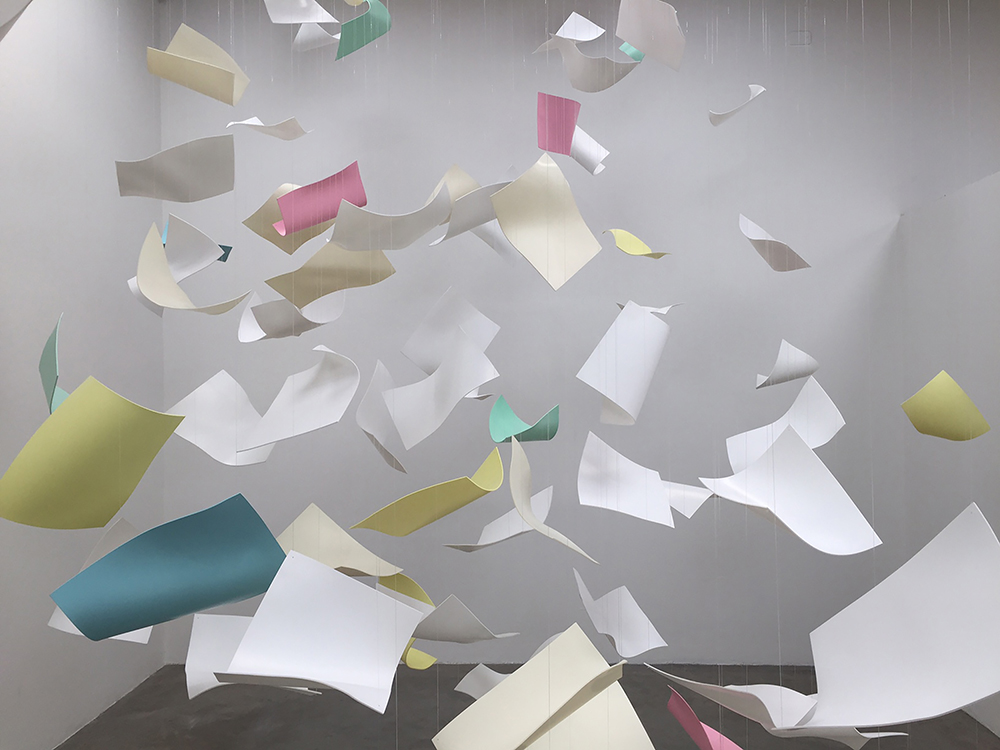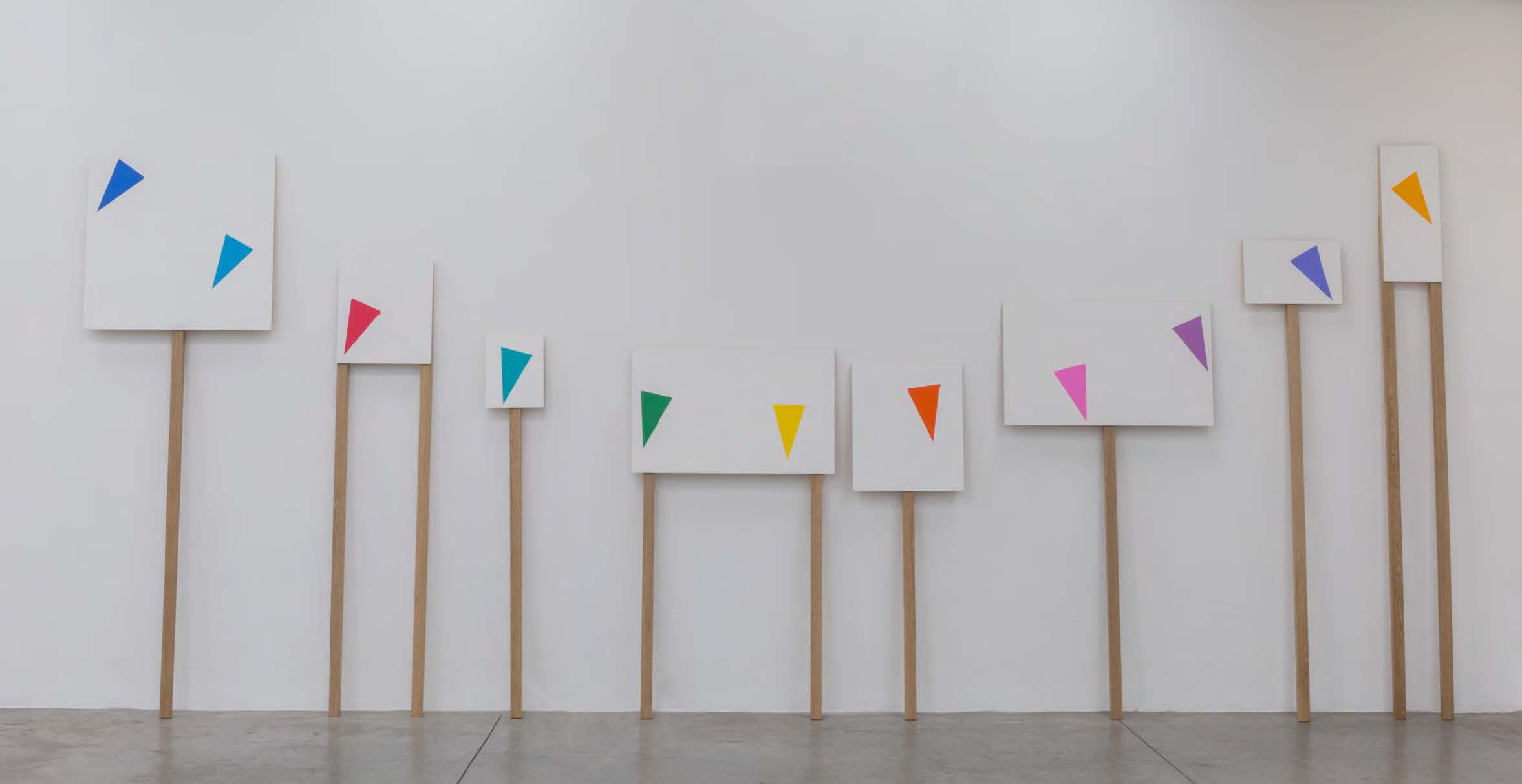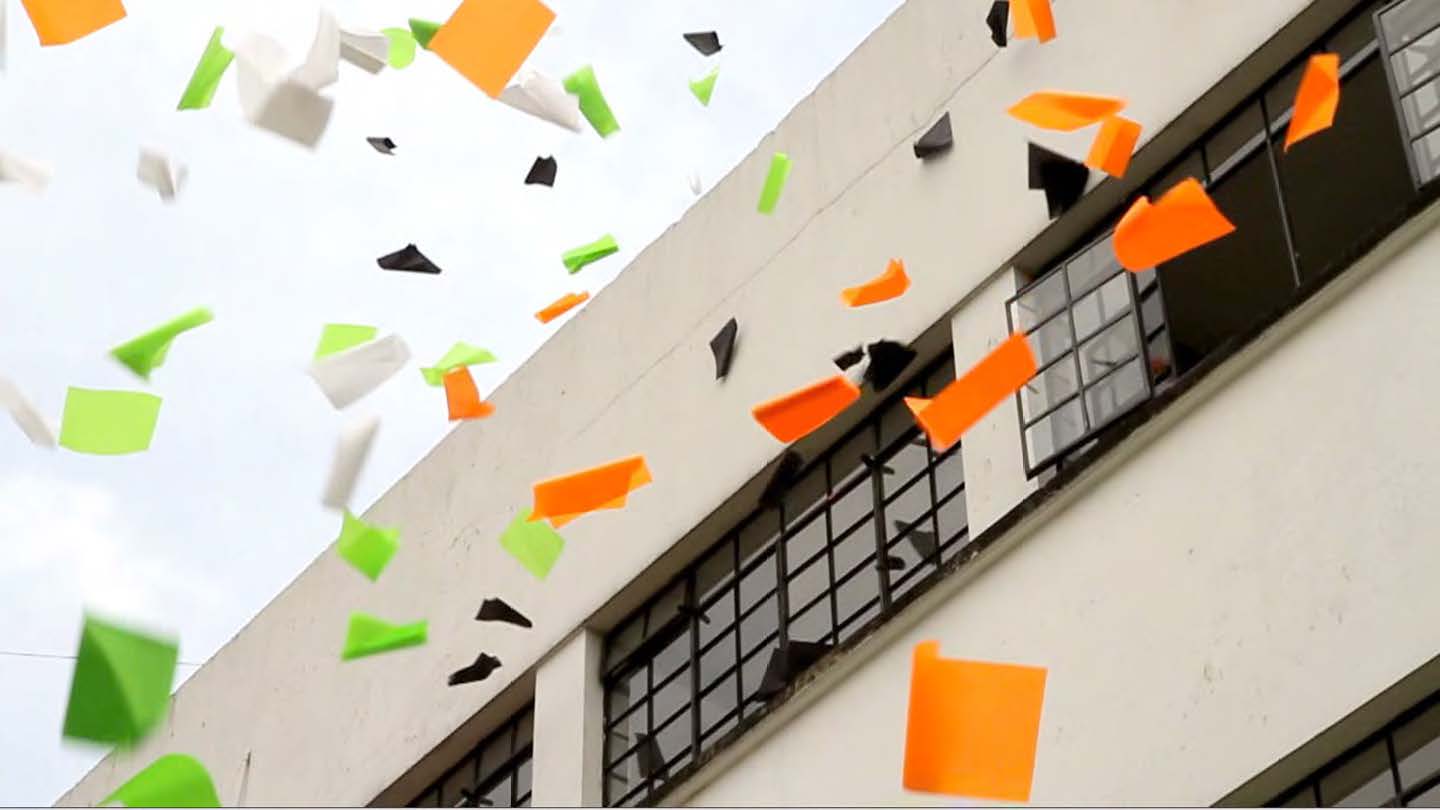Amalia Pica & Otto Berchem: "Mobilize" at Instituto de Visión, Bogotá
Instituto de Visión
Cr. 23 #76-74, Bogotá
Through August 25th 2017
An installation with the mien of a kinetic mobile hangs, motionless, from the ceiling. Despite the dynamism of its name, its constituents are fixed into place by invisible threads; the festive cloud of oversized pastel confetti squares suspends in the air, tensely hung, as though frozen into an image. Each curved square, expressive in its pose, connotes the gracefulness of a dove.
Amalia Pica & Otto Berchem, Mobilize, 2017. Image courtesy of Instituto de Visión.
Not far off, in contrast to the stable cloud, a chair has brutishly been toppled over. A bit of confetti hangs languidly over its metal components, clinging to the ground. If this is the aftermath of a party, we weren't there to witness what may have been the origin of this event. Was it of tragic, epic, or comedic nature? Perhaps the celebrated screamed "it's my party and I'll cry if I want to" before the festivities ended in a melodramatic catastrophe. But was it a party, or in fact something of a more turbulent nature?
Amalia Pica, Procesión de Ocho / Process of Eight, 2017. Image courtesy of Instituto de Visión.
Amalia Pica, Inventario de (in)escuchados / (Un)heard inventory, 2017. Image courtesy of Instituto de Visión.
Amalia Pica and Otto Berchem joined forces to create Mobilize, "an exercise of cooperation between two friends," a cloud-like piece that can be read through either of their logics. The other works displayed, some by Pica, some by Berchem, create a frame for the viewing of Mobilize, and they are framed, in turn, by our understanding of the piece. Let's think about social action and revolution: if we consider the piece through Pica's lens — she who often works through the signs, instruments and mechanisms for the communication of organized movements — then the papers might be related to the disappointment of bureaucracy in the halt of movement and action, with regards to social action. If we read it through Berchem's, on the other hand, we can consider Mobilize as an absorption of the revolving nature of revolution, cyclical in structure, serving as a formal outgrowth of his video "Revolver," which derives from his synaesthesia and his work on semiotic systems around the signalization of protests.
Otto Berchem, Revolver, 2013. Video installation. Duration 2'20". Image courtesy of Instituto de Visión.
Otto Berchem. They Want to Stay, 2017. Image courtesy of Instituto de Visión.
Located in the burgeoning San Felipe arts district of Bogotá, Instituto de Visión was once home to an inquilinato, a shared housing community where over thirty people cohabited in the same room. In Mobilize, the social aspect is strongly felt, only one example of the social issues that reflect much of the art being shown in Bogotá in 2017. Timely enough for Mobilize, a teacher’s protest seized the country at the time of the show's opening. The political event bears witness in inverse to the works we see at Instituto de Visión, a name that suggests a democratic institute of viewing, or an educational program, for the viewing of art in an ever-conflicted country.










